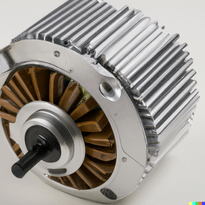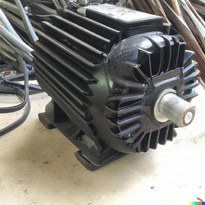Custom BLDC Motor Manufacturer
While Innotec has a wide range of standard motors, the company also stands out by being able to offer custom electric motors. Depending on the size and power output, this could fit within one of our standard frame sizes or could be a built to order unit. As a Custom BLDC motor manufacturer starts with the end goals first.
To jump to our Custom Motor page click here
To jump to our standard BLDC motors click here
If you have an immediate requirement, contact us and we can work together to find the right solution.
Determining Basic Electrical Inputs for your Custom Motor
You need to be able to answer:
- What is the desired power output (in terms of torque, kW or horsepower)? (See below for more information)
- What is the desired rated speed?
- What will be the input voltage?

Once you can answer these 3 questions, you have to provide us with any mechanical constraints or fitting specifications.
At Innotec, we can take a look at what the motor is being connected to and give our suggestion on the best frame size/fitting possible. Here are the considerations:
What is the maximum diameter available? What is the maximum length available?
- Do you have any constraints on the mating? Does it need to be foot mounted or flange mounted? If it is a flange mounted unit, where are the mounting holes?
- What is the shaft input/output required? Do you need a spline on the shaft to mate to your existing output?
There are a lot of considerations and Innotec’s engineers and specialists can help in the process of evaluating what is required.
Cooling Custom Electric Motors
Motor prototyping must include cooling considerations. This has to first start with an optimized motor design. Once we know the efficiency and heat loss, we can determine how much cooling is required based on the run time.

Innotec manufacturers liquid cooled custom electric motors, and does motor prototyping with passive cooling and forced air cooling. Part of this will depend on the application.
A lot of our standard 72 volt motor options will come with both liquid and forced cooling.
Considerations of cooling requirements:
Power dissipation is normally given in watts (W) and is the amount of heat generated as the motor operates (assuming full load).
Ambient Temperature is the temperature of the environment in which the device is operating.
Thermal resistance of the heat sink (in our case the motor body). This is a measure of the ability of the heat sink to dissipate heat. It is usually given in degrees Celsius per watt (°C/W). Knowing this and the total surface area of the heat sink that is in contact with the air will determine how much passive cooling is possible.
Power Output for Custom Motor Prototyping
To do determine the power output desired for your custom motor application. Refer to the below formulas when converting between HP and kW.
Power can be given in terms of torque (NM or lb:in)
The 2 conversion formulas for Torque
Torque (lb.in) = 63,025 x Power (HP) / Speed (RPM)
Torque (N.m) = 9.5488 x Power (kW) / Speed (RPM)
Power (kW) = Torque (N.m) x Speed (RPM) / 9.5488
Power (HP) = Torque (lb.in) x Speed (RPM) / 63,025
When designing your complete drivetrain you also need to account for efficiency losses of the motor, controller, differential/gear when sizing your system. We view ourselves as a top custom BLDC motor manufacturer globally. Not only can we guide you through the process but we can deliver within a very short time frame.
Contact us today to discuss further.
